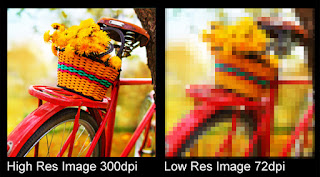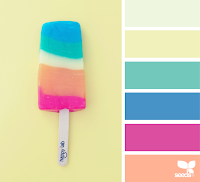Hi, friends! The blog team and I decided to do a post celebrating some of our favorite tips and tricks for flag design... we quickly realized it would take more than just the one post to cover everything. So, I've broken it all down into some easy installments!
Let me first preface this by saying that for every item listed here, you’ll find a successful group that does exactly the opposite. There are no real hard and fast rules to great flag design.
Ready to get started? Great!
1. DON'T be afraid of color!
Let's face it, color can be a little intimidating if it doesn't come naturally to you. Thankful there are tools out there to help. Try a free service such as
Adobe Color CC or
Colour Lovers to find user created color schemes or schemes based on images you provide. Some sites like
Design Seeds will break it down into collections by theme.
Be sure to consider the mood of the music your are trying to compliment. Contrasting colors can create tension, perfect for a higher energy piece, whereas complimentary color schemes will help soften the mood bringing harmony. Even a vibrant or subtle splash can bring your music to life. Whether you go with a solid flag or a go daring with a pattern that features several colors - the options are nearly endless!
2. DON'T forget about context
If flag's job is mostly to help your group entertain the crowd at football games, then a go-to design in school colors could be the perfect choice. But if your flag is intended to compliment a competitive show or exhibition, remember to consider the context in which your flag will be displayed. Think about the field or floor color, your band and guard uniforms, as well as any props. Your flags should bring life to your show, not overwhelm it.
Visual cohesion is often the downfall of many good ideas – sometimes it is better to keep things simple.
3. DO start with a sample flag
A sketch is a great tool to help visualize the final product, but until you see the actual fabrics put together on the field or floor, and give it a spin, you may not know that a design is truly effective (before you commit a lot of time and materials). Samples are a great way to make sure the design, colors, and fabrics look great!
4. DO consider custom shapes
Band Shoppe offers ten standard flag shapes including Arc, Rectangle, Arc Curve, Curve, Slant, Teardrop, Shield, Pennant, Triangle, or Swing. But you're not limited to these shapes! We can work with your ideas to create a flag shape to perfectly compliment your show. If you choose a custom shape, remember to get a sample to make sure it spins the way you hope.
5. DO consider printing
Digitally printed flags are a great way to save an already lean budget. That 50 piece sewn flag that will accentuate your show perfectly? Print it! Also, consider printing on other fabrics. Along with the standard Poly China Silk, Band Shoppe offers three fabric options for digital flags, Crystal Clear Lame, Iridescent Ice, and Flag Twinkle. These other fabrics are a great way to add texture and shine to an otherwise nondescript image.
6. DON'T pick just any image for digital flags
Images with too much detail are going to get lost from the press box. With digital flags, less is often more in the outdoor arena. Instead, go for a bold photo or texture. Think stage makeup, details pop from far away when the they're exaggerated.
 |
| High Resolution Photo vs. Low Resolution Photo |
Also, remember image resolution. Most images found on a basic Google image search, along with potentially being copyright protected, are just too small. That's why we ask for high resolution images, to obtain better quality printing. In the example, note the crisp detail on the high resolution image. This picture will look very good when it is printed. On the right is a low resolution image like you find on Google. As you can see, its quite muddy, and won't look any better on fabric. So where do you find High Resolution images?
Shutterstock is our preferred stock image website – just let your Sales Representative know the image ID, and our design team will do the rest! Choose either photos or vector illustrations.
7. DON'T give in to fads
Fads come and go, but the tried-and-true options have stood the test of time. Lamés, twinkles, and other novelty fabrics look gorgeous but are prone to damage. Should you choose to use these options, be sure to have a needle and thread handy. Likewise, digital flags are not always the answer. They are an easy way fit a theme, they're lightweight, and do not damage as easily as other options, but they just don't have the same WOW factor as a well designed sewn flag. Consider your options fully before committing to the latest trend.
8. And finally, DO trust your instincts
If a pattern, image, or color just doesn't sit well, then it's probably for a reason. Listen to your gut - your first thought is usually your best. Relax and don't agonize over a flag and don't be afraid to ask for help! If you're struggling to find the best option for a song, ask trusted friends, family, or other staff members. Help is always closer than you think.
Other Helpful Hints
- White poles are usually a good choice and look nice when using white rifles. If you want more color, Band Shoppe’s Ultra Prop Film is a great option with easy application and a seamless look. If you choose to tape your flags to the pole, use tape that matches your pole or sleeve color.
- When using bolts to weight your poles, prevent them from moving around and clanking by wrapping them with foam tape, or consider using DSI’s Pole Weight Anchors.
- Resist the urge to place an obvious hand check marker on your poles. They look terrible and can detract from the clean, polished look of your performance. Instead, slide a pony tail holder to the desired location and tape over it in the same color as your pole. This gives you a seamless look from far away but gives you a ridge that can be seen and felt.
- Use Budget Flags at practice. Your show flags will thank you by looking as good for your last, and probably most important performance, as they do for your first.
Do you have a favorite flag tip or trick you wish you would have known waaaay sooner? Let us know in the comments!
 Visual Identity Shakeup
Visual Identity Shakeup





























